Introduction
Overall Design
{{section_header}}{{section.name}}{{/section_header}}
Samsung has definitely taken the lead in slick TV design this year. The PNxxC550 series is certainly not as cutting edge as something like the C7000 series, but when you put it side by side with a comparable LG or Panasonic, you can see how far ahead they really are. It's a smart move when you realize how close TVs are to a commoditized product, with few distinguishing characteristics beyond eye appeal and a few meaningless specs on a Best Buy tag.
Front
{{section_header}}{{section.name}}{{/section_header}}
The Samsung PN50C550 has an elegant looking design from the front. Along the bezel on one side is a series of buttons to control power, volume, channel up/down, etc.

Back
{{section_header}}{{section.name}}{{/section_header}}
The back of the Samsung PN50C550 has a metal frame on the back, which certainly seems more formidable than the plastic back on a cheap LCD TV. Most of the ports are gathered in one corner.

Sides
{{section_header}}{{section.name}}{{/section_header}}
The Samsung PN50C550 is surprisingly slim, for a 50-inch TV. There is enough room, however, for ports on the left side.

Stand/Mount
{{section_header}}{{section.name}}{{/section_header}}
The stand is very heavy – heavier, in fact, than some smaller LCD TVs we've reviewed. It's a welcomed weight, though, because the TV panel is so tall and top-heavy. Remarkably, the stand still allows the panel to swivel back and forth.
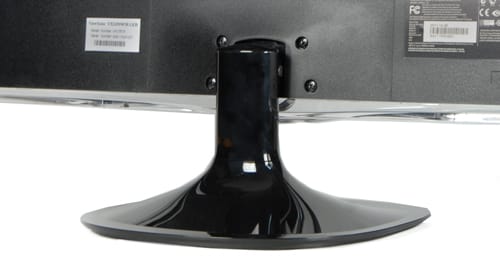
Controls
{{section_header}}{{section.name}}{{/section_header}}
The onboard controls are located on the front of the TV, on the bezel. They're difficult to see because they're touch sensitive controls rather than hard, plastic buttons. You're welcome to use them, but be aware that the whole surface is a fingerprint magnet.
Remote Control
{{section_header}}{{section.name}}{{/section_header}}
The remote control that ships with the Samsung PN50C550 has an efficient design and a great backlight feature that can be handy in a dark room.
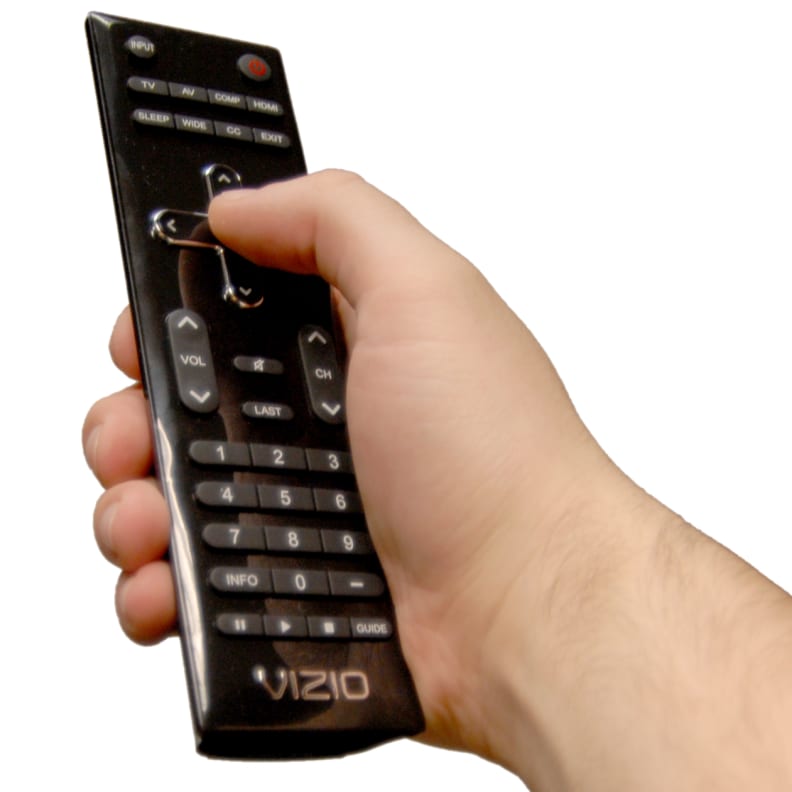
In the Box
{{section_header}}{{section.name}}{{/section_header}}
The Samsung PN50C550 ships with the stand, remote control, batteries, AC power cable, a wipe cloth, instruction manual, and assorted documents. You'll want a hand setting this TV up because it's so heavy.
Black Level
{{section_header}}{{section.name}}{{/section_header}}
The Samsung PN50C550 managed a very good black level score, which is one of the factors that plasma shoppers keep a close eye on. The 0.06 cd/m2^ performance was not quite as low as a similar Panasonic, but it's certainly good enough for us. More on how we test black level.
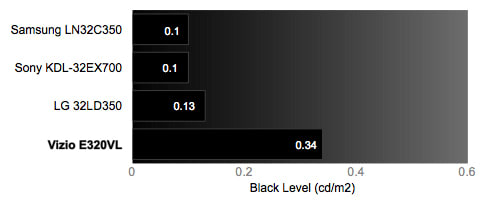
Peak Brightness
{{section_header}}{{section.name}}{{/section_header}}
The Samsung PN50C550 managed a decent peak brightness, at least for a plasma TV. As you can see in the chart below, the LG, Panasonic, and Samsung are all plasma TVs, and the Samsung is the brightest by far. Of course, an LCD like the Sony 52EX700, clobbers them all. More on how we test peak brightness.
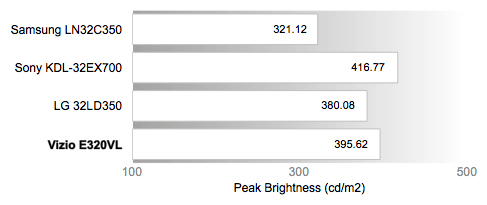
Contrast
{{section_header}}{{section.name}}{{/section_header}}
The ability to produce both a good black level and peak brightness means a satisfactory contrast ratio of 2917:1. That's not quite what the similar Panasonic could do, and a far cry from the Sony EX700, but much better than the LG 50PG30. More on how we test contrast.
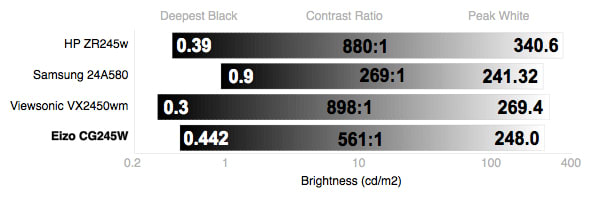
Tunnel Contrast
{{section_header}}{{section.name}}{{/section_header}}
The Samsung PN50C550, like many plasma TVs, had a hard time maintaining a consistent black level as the amount of black on the screen decreases. A huge splotch of black is going to appear much darker than small patch surrounded by white. This is not something that most LCDs have a hard time with. More on how we test tunnel contrast.
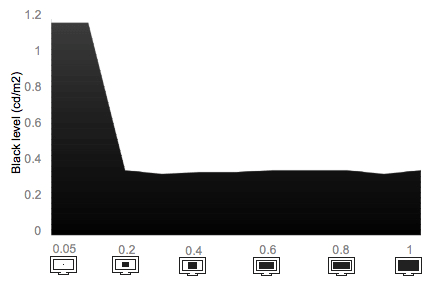
White Falloff
{{section_header}}{{section.name}}{{/section_header}}
The Samsung PN50C550 experienced some very serious problems with maintaining a consistent white level as the amount of white on the screen increased. On most plasmas, a small bit of white will appear much brighter than a large patch of white, ostensibly to reduce overheating. (White is brighter, requiring more energy output, and therefore heat. Plasma displays overexcite gas trapped between two panels of glass, so too much bright white would either melt the TV or create a black hole. Science does not yet know.) More on how we test white falloff.
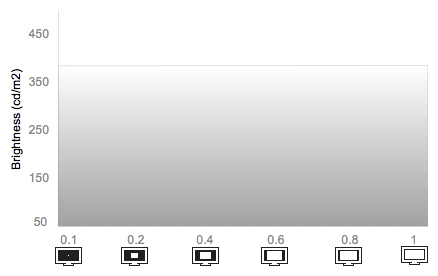
Uniformity
Greyscale Gamma
{{section_header}}{{section.name}}{{/section_header}}
The Samsung PN50C550 transitions pretty well from black to white, for the most part. Look at the chart below. First look at the smoothness of the line. There are definitely hiccups in the shadow details, located in the lower left portion of the line.Crooks in the line indicate areas where you can expect to see color banding. But as it moves right, into the midtones, the line smooths out. There's also the slope of the curve to consider. Overall, the curve of 2.32 is very good. An ideal curve is between 2.1 and 2.2. However, the curve tapers off in the upper-right portion, meaning it has a harder time finding details in the highlights. More on how we test greyscale gamma.
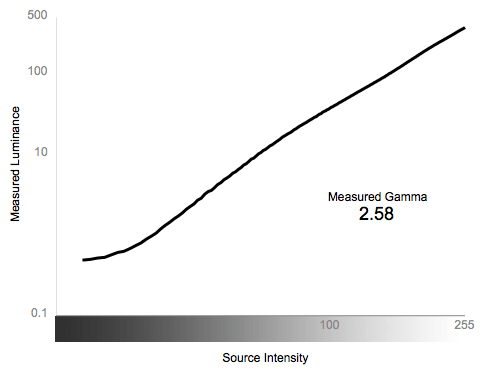
Color Temperature
{{section_header}}{{section.name}}{{/section_header}}
The Samsung PN50C550 did very well in maintaining a consistent color temperature. As you can see in the chart below, there are some fluctuations throughout the signal range, but only when it gets very dark do the colors start to noticeably warm up a little. More on how we test color temperature.
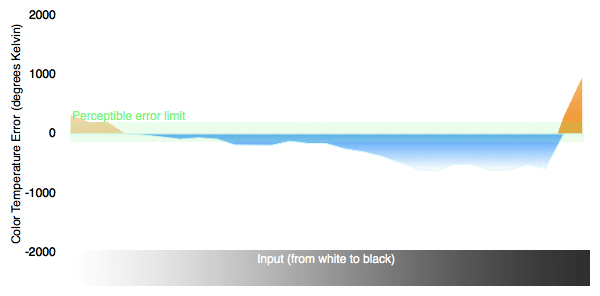
RGB Curves
{{section_header}}{{section.name}}{{/section_header}}
The color curve performance of the Samsung PN50C550 was a bit strange, as you can see in the chart. Normally, we look for the red, green, and blue channels to slope smoothly up from shadows to highlights, and for the three channels to move more or less in tandem. Clearly, they do not move in tandem and the lines are not smooth. Each of those bumps in the line is an area where you're likely to see color banding, so don't expect the smoothest transitions. The blue channel is the worst, peaking very early and showing a lot of difficulty seeing detail in the highlights. The reds also peaked, but not as harshly. Only the green channel looked relatively consistent. More on how we test RGB curves.
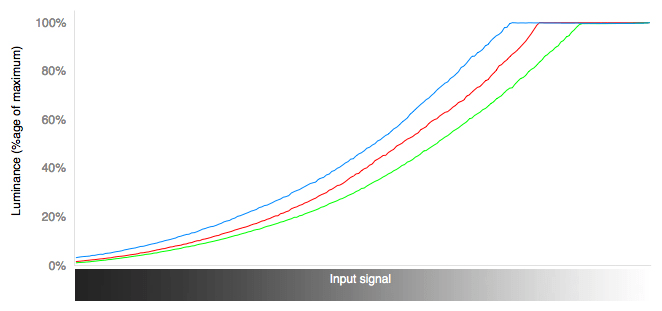
The color strips below are digital recreations of the RGB color curve tests. You can see the Samsung PN50C550's performance compared to three similar TVs, as well as an ideal response curve.
Motion Performance
{{section_header}}{{section.name}}{{/section_header}}
The Samsung PN50C550 proved to have a very smooth motion performance, which is something that we typically see in plasmas. They manage avoid the clippy, stuttering motion that we see in bad LCD TVs.
While the motion was smooth, the Samsung PN50C550 experienced some very distinct problems with motion artifacting. We noticed that images of complex color and detail – say, for instance, a face – becomes color-banded and blocky when in motion. Unfortunately, complex color and detail pretty much described most TVs and movies. However, large, simple blocks of color and detail looked perfectly fine. Usually, when a TV chokes on one, it also chokes on the other. We've seen it time and again. We had to split the difference and give the Samsung PN50C550 a decent score. More on how we test motion performance.
3:2 Pulldown & 24fps
{{section_header}}{{section.name}}{{/section_header}}
The Samsung PN50C550 can certainly accommodate native 24fps content, like you might get with a Blu-Ray movie, but it's not a perfect picture. During slow, horizontal pans, we noticed obvious stuttering due to poor 3:2 pulldown. More on how we test 3:2 pulldown and 24fps.
Resolution Scaling
{{section_header}}{{section.name}}{{/section_header}}
The Samsung PN50C550 has a native 1080p (1920 x 1080) resolution, but much of the content you'll watch will be of a lower resolution. It's up to the TV's internal processing to rescale that image to fit the screen. In general, the TV is quite good at the task. More on how we test resolution scaling.
480p
The 480p content we tested lost 3% of the picture on every side due to overscan.
720p
The 720p content showed only minor problems with Moires in high-frequency, high-contrast patterns.
1080i
The 1080i content also showed very minor problems with Moires in high-frequency, high-contrast patterns.
Formats
{{section_header}}{{section.name}}{{/section_header}}
The Samsung PN50C550 has a native resolution of 1080p (1920 x 1080), but can easily handle all standard NTSC formats.
Viewing Angle
{{section_header}}{{section.name}}{{/section_header}}
The viewing angle of most plasmas is very good, and the Samsung PN50C550 proves the case once again. It achieved a viewing angle of approximately 155 degrees (77 degrees from center on either side) before losing significant contrast. A similar Panasonic and LG plasma TV managed slightly wider viewing angles, while the Sony LCD TV couldn't even compete.
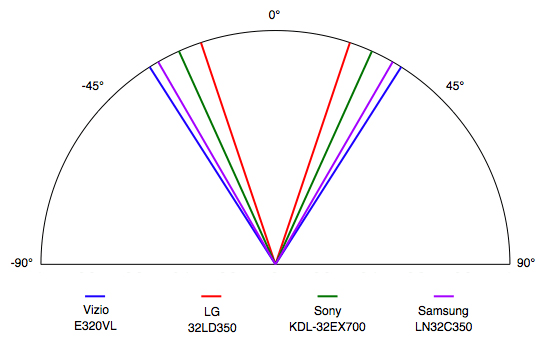
Reflectance
{{section_header}}{{section.name}}{{/section_header}}
When a strong ambient room lights hits the screen of the Samsung PN50C550, a wide, diffuse reflection is vast. It's very distracting and kills the contrast ratio. If you can manage to change either the angle of the screen or the angle of the light, it will make a big improvement. Remember than any TV will have problems with an overly-bright room.
Video Processing
{{section_header}}{{section.name}}{{/section_header}}
The Samsung PN50C550 has several video processing features, most of which we recommend you avoid.
Calibration
{{section_header}}{{section.name}}{{/section_header}}
The Samsung PN50C550 requires a few tweaks to get best performance. As per usual, the labels in the menus don't necessarily correspond to what you think they should control. For instance, the "Brightness" setting was more of a contrast control, while "Contrast" shifted color temperature. It's no wonder most people don't calibrate their TVs; how on earth would you know what you're doing without some practice and dedicated software/hardware?
We should note that we noticed an unusual reddish tone in the whites. In order to correct it, we lowered the "Red Gain" in the White Balance settings.

All of our calibration is done in conjunction with the DisplayMate software.
](http://www.displaymate.com/)
Video Modes
{{section_header}}{{section.name}}{{/section_header}}
Note that any video processing features that could be disabled were disabled, although in Movie mode most of them are defaulted to the off position anyway.
Ergonomics & Durability
{{section_header}}{{section.name}}{{/section_header}}
The remote control that ships with the Samsung PN50C550 is the same that came with many 2009 models. Overall, we like the remote because the buttons feel right under your thumb. There's also a handy backlight for using the remote in a dark room.
Button Layout & Use
{{section_header}}{{section.name}}{{/section_header}}
Most of the buttons are made of a soft rubber material that feels comfortable to the touch. The only exception is the d-pad in the center. For reasons unknown, this control is hard of hard plastic and doesn't light up like the other buttons when the backlight is on.
Programming & Flexibility
{{section_header}}{{section.name}}{{/section_header}}
The Samsung PN50C550's remote can be used to control other Anynet+ compatible Samsung devices, but it's not a universal remote.
Connectivity
{{section_header}}{{section.name}}{{/section_header}}
Input Ports (6.5)
The Samsung PN50C550 offers plenty of ports for a home theater hub. There are 4 HDMIs and 2 component AV inputs. One of these component AV inputs doubles as a composite AV input, and there's a dedicated composite on the side. The LAN and optional WiFi can connect to DLNA home theater networks, but not streaming content from the internet. The 2 USBs can connect to USB storage devices to play back photos, video, and music clips.
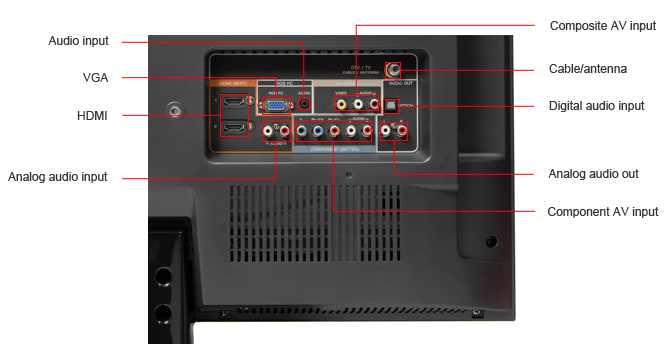
The ports are spread out between the back and sides.
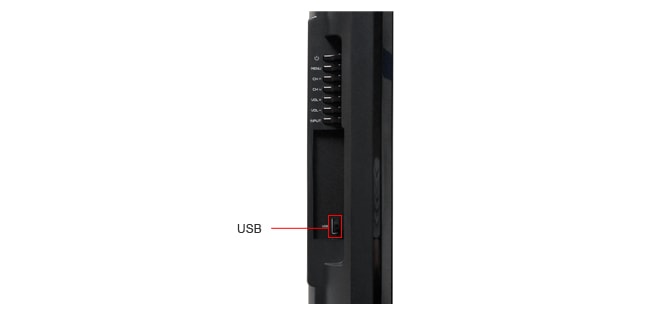
Output Ports (2.0)
The Samsung PN50C550 has two output ports, an analog and a digital audio output. This is great, because it means you can connect to both old and new sound systems.
Other Connections (4.0)
The Samsung PN50C550 has a LAN port for connecting to DLNA home theater networks. There's also the option of WiFi, using a separately purchased USB dongle.
Media (2.0)
The Samsung PN50C550 has two USB ports that can be used to play media files from USB storage devices.
The table below has a complete breakdown of the ports, compared with three similar TVs.
{{product.manufacturer_specs['Connectivity Tour Image 3']}}
Placement
{{section_header}}{{section.name}}{{/section_header}}
The ports are placed as well as they can be on a giant TV like this. Most are gathered in a bottom corner on the back of the TV panel. A few more are on the side. The TV panel can swivel on the base to help you reach the back.
Audio Quality
{{section_header}}{{section.name}}{{/section_header}}
The audio quality on the Samsung PN50C550 is surprisingly good. Perhaps it's a better set of speakers than usual, or perhaps just the large panel in which to reverberate the sound. There was good clarity throughout the tonal range, particularly when balancing dialogue midtones at the same time as deep, bass-y explosions and high-pitched bullets sounds.
There are five audio mode presets: Standard, Music, Movie, Clear Voice, and Amplify. We recommend Standard or Movie. In Standard mode, you have access to a 5-channel equalizer. Other features include a surround sound emulator called Virtual Surround, Dialog Clarity, and Auto Volume (a volume leveler). You don't even need the Virtual Surround feature enabled, though, because the speakers are far enough apart and positioned in such a way that it sounds pretty convincing on its own.
Of course, you'll never get the deep bass that a dedicated surround sound system with a subwoofer produces, but this is a very good start.
Menu Interface
{{section_header}}{{section.name}}{{/section_header}}
The Samsung PN50C550 features that same great menu we've seen on most recent Samsungs. The main submenus are arranged vertically on the left, so you almost always know where you are. Familiarize yourself with the Return and Exit buttons on the remote and you should be all set.
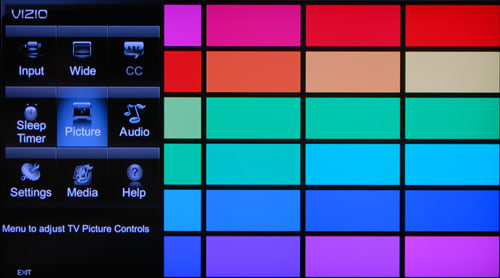
There are just two sub-submenus that ditch the left-side navigation. To exit, just hit the Return button.
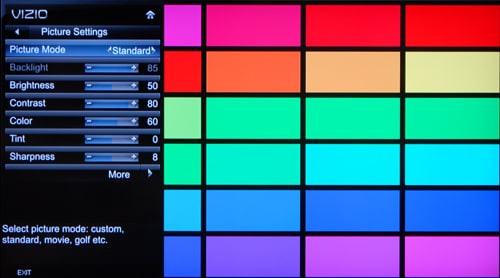
Instruction Manual
{{section_header}}{{section.name}}{{/section_header}}
The instruction manual that ships with the Samsung PN50C550 has nearly all the answers you seek. A table of content in the front and alphabetical index in the back make searching a breeze. You can search the digital version. You can find the Samsung PN50C550's manual online here.
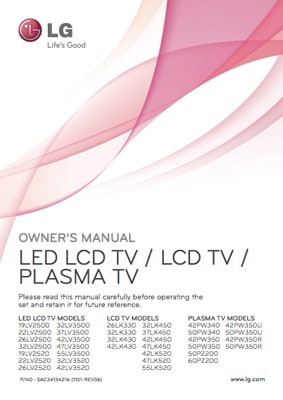
A manual for so many TV models, they have to be further categorized by type.
Internet Features
{{section_header}}{{section.name}}{{/section_header}}
The Samsung PN50C550 has a LAN port and the option for WiFi, with a separately purchased USB dongle. These allow you to connect to a DLNA home theater network. You can also download software upgrades direct from Samsung. However, you do not have access to Samsung's suite of internet streaming content or apps, as you might find on slightly more expensive Samsung models. For this reason, you may want to consider the cost of upgrading to the PNxx6400 or PNxx6500 series.
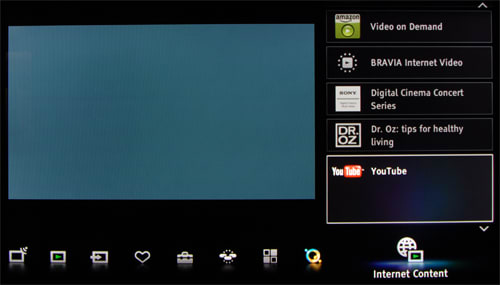
Local Media Playback
{{section_header}}{{section.name}}{{/section_header}}
The Samsung PN50C550 can play back photos from USB mass storage devices. There are lots of options for sorting, display size, slide show speed and background music, etc. This is the kind of playback control that can make a TV a great display for pictures during a cocktail party.
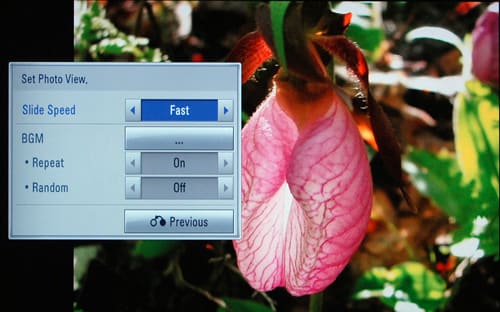
The Samsung PN50C550 also supports the playback of music and video files from USB mass storage devices. Simply pop in your device and hit the Media P. button on the remote. You'll see the menu below. Select your media type to see a list of the files. Like the photo playback function for slideshows, you can create playlists of music or videos.
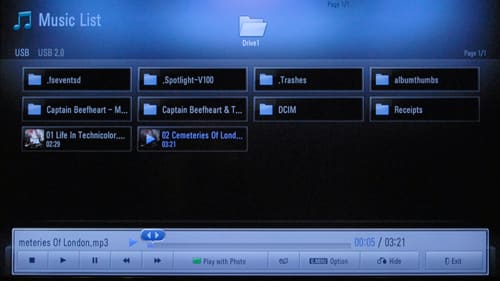
Other Media
{{section_header}}{{section.name}}{{/section_header}}
The Samsung PN50C550 does nor include any other type of media support.
Power Consumption
{{section_header}}{{section.name}}{{/section_header}}
The Samsung PN50C550 was a power-hungry TV due to its large screen size and plasma display technology. Unlike many plasmas, you do actually have the ability to control the "backlighting," called Cell Light here. However, we recommend leaving it at the highest setting because the screen doesn't get all that bright. You can set the Cell Light at 0 and save money, but the picture is far too dark.
You can see below that the three plasmas are quite expensive, while the Sony LCD is remarkably less power hungry.
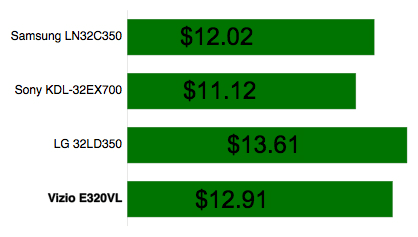
Value Comparison
{{section_header}}{{section.name}}{{/section_header}}
The Panasonic TC-P50G25 is a much more expensive TV, but that comes with some definite improvements in performance over the Samsung PN50C550. We saw deeper blacks, wider contrast ratios, better color performance, slightly better motion performance, a wider viewing angle, and connection to streaming content over the internet. The Samsung, by comparison, offers DLNA support that the Panasonic lacks, as well as a few connectivity enhancements. Take a moment to figure out the TV you need before making your decision.
Blacks & Whites
{{section_header}}{{section.name}}{{/section_header}}
The Samsung PN50C550 has a good contrast, but the Panasonic P50G25 managed noticeably lower black levels, which created an even wider contrast ratio. It might help if we remind you that the cd/m2^ numbers are logarithmic rather than linear, meaning there's a big difference between 0.04 cd/m2^ and 0.06 cd/m2.

Color Accuracy
{{section_header}}{{section.name}}{{/section_header}}
The Samsung PN50C550 and Panasonic TC-P50G25 both did well in maintaining a consistent color temperature, but the Samsung was particularly weak in producing smooth color curves.
Motion
{{section_header}}{{section.name}}{{/section_header}}
The Panasonic TC-P50G25 managed a slightly smoother picture, but showed a little more artifacting.
Viewing Effects
{{section_header}}{{section.name}}{{/section_header}}
The Panasonic TC-P50G25 has a slightly wider viewing angle than the Samsung PN50C550.
Connectivity
{{section_header}}{{section.name}}{{/section_header}}
The Samsung PN50C550 definitely beats the Panasonic TC-P50G25 in connectivity, with an additional HDMI.
Value Comparison
{{section_header}}{{section.name}}{{/section_header}}
The LG 50PQ30 costs the same as the Samsung PN50C550, but fails to compel us. It lacks the Samsung's strong contrast ratio. The motion performance was also not as strong. The LG 50PQ30 lacks networking capabilities, so there's no DLNA support. Overall, we just can't recommend it over the Samsung.
Blacks & Whites
{{section_header}}{{section.name}}{{/section_header}}
The LG 50PQ30 could not manage the deep blacks of the Samsung PN50C550, nor the peak brightness.

Color Accuracy
{{section_header}}{{section.name}}{{/section_header}}
The LG 50PQ30 managed better color curves than the Samsung PN50C550, so expect slightly smoother color transitions.
Motion
{{section_header}}{{section.name}}{{/section_header}}
The LG 50PQ30 had some problems with motion performance. While the Samsung wasn't perfect, we found it's motion rendering much smoother.
Viewing Effects
{{section_header}}{{section.name}}{{/section_header}}
The viewing angle of the LG 50PQ30 is wider than the Samsung PN50C550, but only by a few degrees.
Connectivity
{{section_header}}{{section.name}}{{/section_header}}
The LG 50PQ30 is not a champ on connectivity, at least not like the Samsung PN50C550 is.
Value Comparison
{{section_header}}{{section.name}}{{/section_header}}
The Sony KDL-52EX700 is an outstanding TV, but it also costs a lot more than the Samsung PN50C550. With the bump in price you get access to Sony's great streaming content, better contrast ratio, and better color performance. Is that enough to warrant the price gap? That's up to you. The Samsung PN50C550 is also a good TV. You'll need to figure out where your standards are.
Blacks & Whites
{{section_header}}{{section.name}}{{/section_header}}
The Sony KDL-52EX700, as an LCD display, simply couldn't manage the deep blacks of the three plasma TVs, particularly the Samsung PN50C550. However, LCDs have no problems getting a nice, bright white, which was enough to make a wider contrast ratio.

Color Accuracy
{{section_header}}{{section.name}}{{/section_header}}
The Sony 52EX700 had real problems with maintaining a consistent color temperature, but it produced much smoother and more uniform color curves. Overall, we much preferred the Sony.
Motion
{{section_header}}{{section.name}}{{/section_header}}
The Sony EX700 was a great performer in our motion tests, exceeding the Samsung, which was good but suffered from some specific artifacting problems.
Viewing Effects
{{section_header}}{{section.name}}{{/section_header}}
The Sony 52EX700, as an LCD display, could not come close to the viewing angle of a plasma display. The Samsung PN50C550 was approximately three times wider.
Connectivity
{{section_header}}{{section.name}}{{/section_header}}
The Sony EX700 series has many ports, and matches the Samsung PN50C550 only point-for-point. The only real differentiating factor is an extra USB and an EX-LINK on the Samsung.
Conclusion
The Samsung PN50C550 ($799 MSRP) offers a lot for its relatively low price. First, there's the huge 50-inch screen. It's tough to find a comparably priced TV of this size with equal performance. Secondly, the C550 has a few add-ons, like DLNA support, that make you feel like you're not settling for an entry-level model.
But the TV is certainly not perfect. The color performance was weak, with choppy gradient transitions and a lack of detail in both shadows and highlights. The biggest problem, though, was screen burn-in. Regular movie watchers may not even notice a problem if the scene is constantly shifting, but sports fans and gamers frequently have graphics fixed in the same position for hours. That could mean lingering ghost images for hours afterwards.
Overall, the Samsung PN50C550 is certainly not the best 50-inch we've reviewed, but it could be the right TV for the right kind of buyer. It got all the makings of a great choice for the serious movie cinephile.
Model Series Comparison
{{section_header}}{{section.name}}{{/section_header}}
There are three models in the plasma PNxxC550 series, all quite large. This is a mid-level series. You get some of the sleeker Samsung design appeal, and DLNA support, but no streaming content or apps like you'd find in more expensive series. There's a high price jump between the three models in this series – more so than you'd find in similarly sized LCD TVs.
Photo Gallery
{{photo_gallery "Front Tour Image", "Back Tour Image", "Sides Tour Image", "Stand Photo", "Controls Photo", "Remote Control Photo", "Connectivity Tour Image 1", "Connectivity Tour Image 2", "Connectivity Extra Photo", "Menu Main Photo", "Menu 2 Photo", "Internet Features 1 Photo", "Internet Features 2 Photo", "Internet Features 3 Photo", "Local Media Playback 1 Photo", "Local Media Playback 2 Photo"}}
Ratings & Specs
{{manufacturer_specs_table}}
Meet the tester
David Kender oversees content at Reviewed as the Editor in Chief. He served as managing editor and editor in chief of Reviewed's ancestor, CamcorderInfo.com, helping to grow the company from a tiny staff to one of the most influential online review resources. In his time at Reviewed, David has helped to launch over 100 product categories and written too many articles to count.
Checking our work.
Our team is here to help you buy the best stuff and love what you own. Our writers, editors, and experts obsess over the products we cover to make sure you're confident and satisfied. Have a different opinion about something we recommend? Email us and we'll compare notes.
Shoot us an email